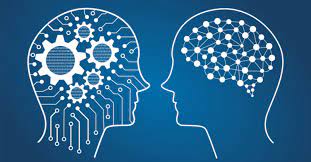Theory of Mind: Are emotions needed for machines?
By Aditya Abeysinghe
 Assessing the mental states of other humans is a task that humans have developed from late childhood. Emotions and social interactions are formed with understanding how others behave with a person. Theory of mind (ToM) describes this process of how mental states’ assessment affects the emotions humans make towards others. In my article on *Artificial General Intelligence, I described about how emotions are important for machines. For Artificial General Intelligence to be truly developed ToM is a key component.
Assessing the mental states of other humans is a task that humans have developed from late childhood. Emotions and social interactions are formed with understanding how others behave with a person. Theory of mind (ToM) describes this process of how mental states’ assessment affects the emotions humans make towards others. In my article on *Artificial General Intelligence, I described about how emotions are important for machines. For Artificial General Intelligence to be truly developed ToM is a key component.
What is ToM?
ToM in simple terms is the set of tasks the mind uses to think about the mental state of others. For example, assume that two people named James and Bred goes to a restaurant to have dinner. When James looks at the menu and tells that he will order some type of Noodles, Bred can infer that James likes to have that type of Noodles. Bred can infer such a thought due to the inferring facility that functions in his mind. This makes Bred create a theory about James and he may later approve, if it is true.
Types of ToM
Two approaches to ToM was proposed by Paul Harris in *From simulation to folk psychology: The case for development. According to this article, Theory-Theory (TT) is an approach where children build theories and then they either approve or confirm after experience. However, TT is rarely useful in practice as a vast number of theories need to be created to assume mental states of another person. The other method is the Simulation Theory (ST) which is based on a simulation process, whereby a person takes another person’s angle to understand the reason for their actions. This method is more useful as it could read the other’s mind directly, in contrast to building theories using assumptions.
How Theory of Mind can be used in machines?
Humans have a mind to think, express and understand others when they are with other people. Therefore, the mind acts as a secondary being within us to provide social functions we require. However, machines do not have such a section to make emotions or react to other humans or machines. Therefore, research has focused on several methods of developing a system within machines which could serve similar to the mind.
As discussed above, both TT and ST could be used to add ToM to machines. However, ST approach is used in many research as it is faster, as Artificial Intelligence (AI) models could be used to simulate the tasks of other people and it is less costly to build simulations, in contrast to validating theories.
What are the advantages of using ToM in AI?

A use case of ToM in an AI environment is autonomous vehicles. Several methods for vision in autonomous vehicles are used: computer vision based on *LIDAR, AI technologies for processing data and cameras. However, the problem with autonomous vehicles is often not its vision, but its safety. So, what makes an autonomous vehicle unable to ensure safety when it could see? The key is difficulty in predicting human behavior when faced with a previously unknown behavior. The AI in autonomous vehicles is only capable of predicting given its inputs, but it is often inaccurate to detect and act when actions that are unknown is seen in them.
*Assistive robotics is another area where machines are used at present. A common use of ToM in assistive robotics is in healthcare. The rate of improvement of diseases for patients with psychological disorders has been found to be increased when robots are used for assistance. Assistances could be made more practical, if robots could express emotions, share feelings and engage in more soothing activities which is part of understanding ToM.
The main limitation of these models is the assumption of mental states of other people, instead of learning continuously from encountered occasions. Therefore, the reasoning process used in current AI to use ToM is often based on propositional logic. However, simulation-based AI models seemed to be improving this issue with assumptions. Therefore, ST based models could reshape AI-based devices into a more humane culture.
*Artificial General Intelligence article: https://www.elanka.com.au/artificial-general-intelligence-the-growth-of-robots-by-aditya-abeysinghe/
*From simulation to folk psychology: The case for development. Mind & Language: https://psycnet.apa.org/doi/10.1111/j.1468-0017.1992.tb00201.x
*Assistive robotics article: https://www.elanka.com.au/the-rise-of-cloud-robotics-how-the-cloud-is-transforming-robotic-landscape-by-aditya-abeysinghe/
*LIDAR: Light Detection and Ranging is a remote sensing method to measure distances to objects
Image Courtesy: https://www.clearstrategy.ie







